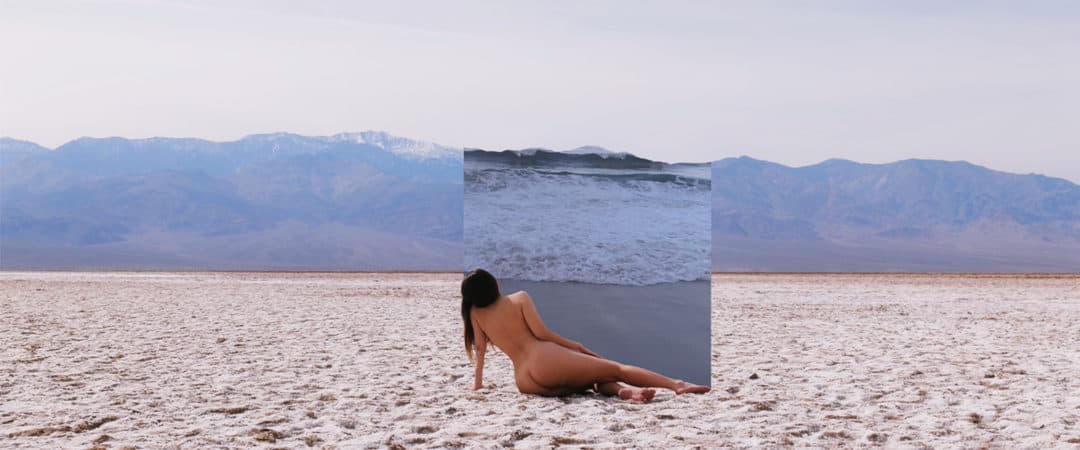
Photographer Ayla El-Moussa captures the landscape of the ocean and the desert, the dynamic surface of the cratered Earth. She then takes her place as model, alone in nature, at the center of it all. El-Moussa grafts the figurative and the terrestrial to share her own experience. She is not alone in her art, for we are there as well. Within the frame, El-Moussa is a stand in for each of us.
It can be difficult to reconcile our place in the world, but against the vastness of the ocean our lives become concrete. Absolute and meaningful. In each of her compositions, El-Moussa dares us to feel human. She invites us all to see ourselves in the natural world and share in her meditative pause. El-Moussa’s art is a balm to alleviate the stress of modern living.
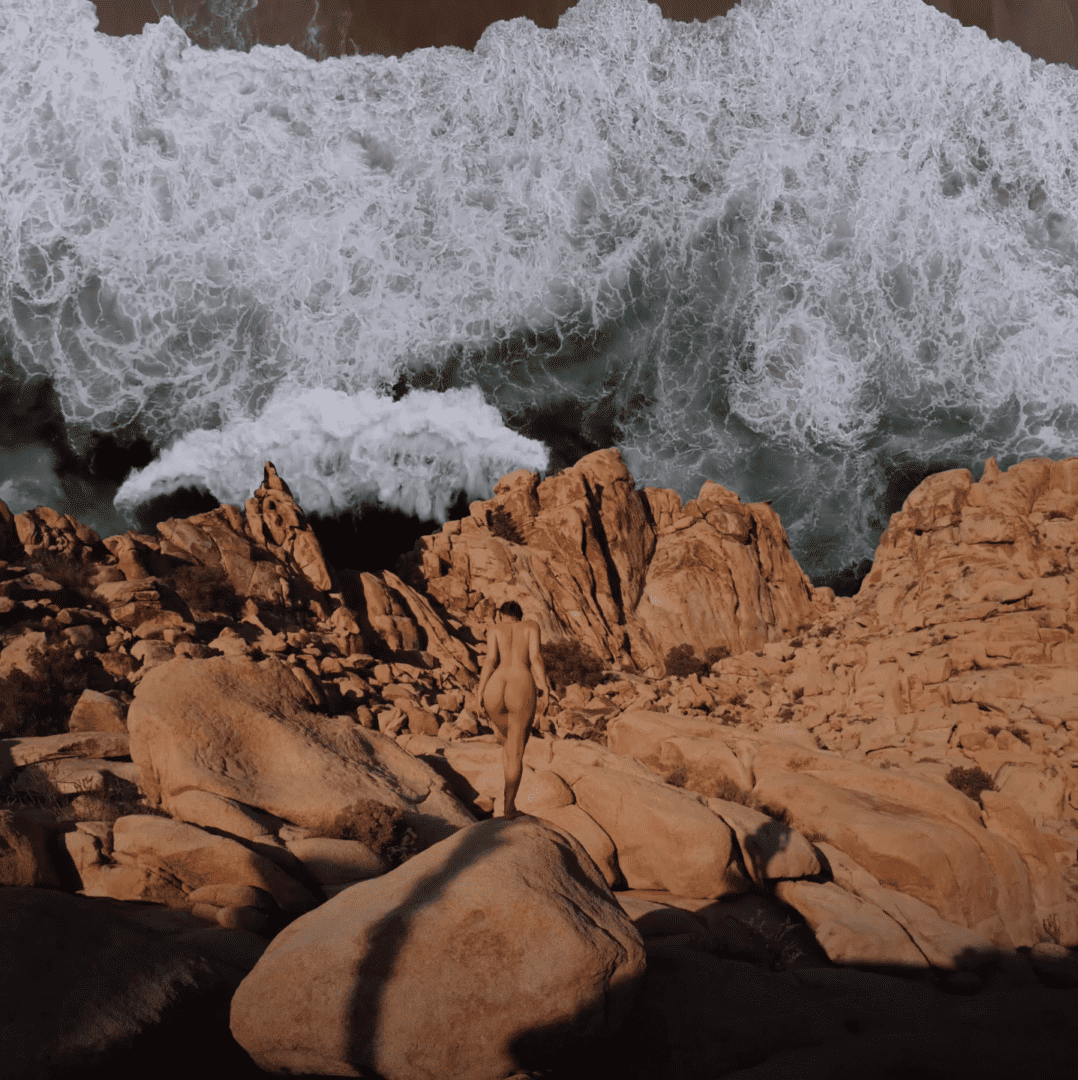
‘I Wear the Sunset’ by Ayla El-Moussa
CJ: I Wear the Sunset feels incredibly vast – epic. You can sense the expanse of the desert, of the ocean. Your camera captured the amazing textures and shapes of rock and water, two ever changing elements. How many shots do you take before you feel confident that you got what you wanted?
AEM: I really love this piece, especially learning that Joshua Tree, where it was shot, has spent time under water, so it was almost this beautifully surreal cycle.
When I’m out shooting myself, it takes a little while because I set up my camera’s self-timer, clamber up to where I want to shoot — I usually have a little marker for where I should stand with a piece of clothing, and then I just shoot a ton. Sometimes I know I’ve gotten it when I go back and look through.

‘A Muse and Her Feelings’ by Ayla El-Moussa
In your piece A Muse In Her Feelings your role as the model is more prominent than in earlier pieces. The expression of the central idea relies on you, the model. The sky is bright and expansive, the mountains and the desert roll, and there in your reflection are the ocean waves. It’s a beautiful visual poem on your role, each of our roles, in life. The natural world is around us as much as it is in us. Are you sketching out your pieces? Creating any sort of rough draft before you go capture the elements you need or is it a spontaneous process?
It depends on what I’m doing. Usually, however, I have a bunch of footage I have accumulated over the years and then at night in my studio, listening to music I will start playing around with concepts. Sometimes, it’s a mistake and sometimes I know exactly what I want to create. It’s sort of this back and forth.
You shared a story (on Instagram I believe?) detailing how your photography made its way into the NFT space. You had found beautifully slim and minimalist screens to play your footage on, a precursor to what would be your NFTs. Is that still a goal, to make your work available as a tangible piece of hung art?
I’ve always known that my work would be special. I never really gave it away for brands to use, and since about 2015 I knew my work would be hanging on screens in homes.
I am working on something to really push the idea of tangible digital art forward but it hasn’t been completed, so I don’t feel confident to reveal it yet.
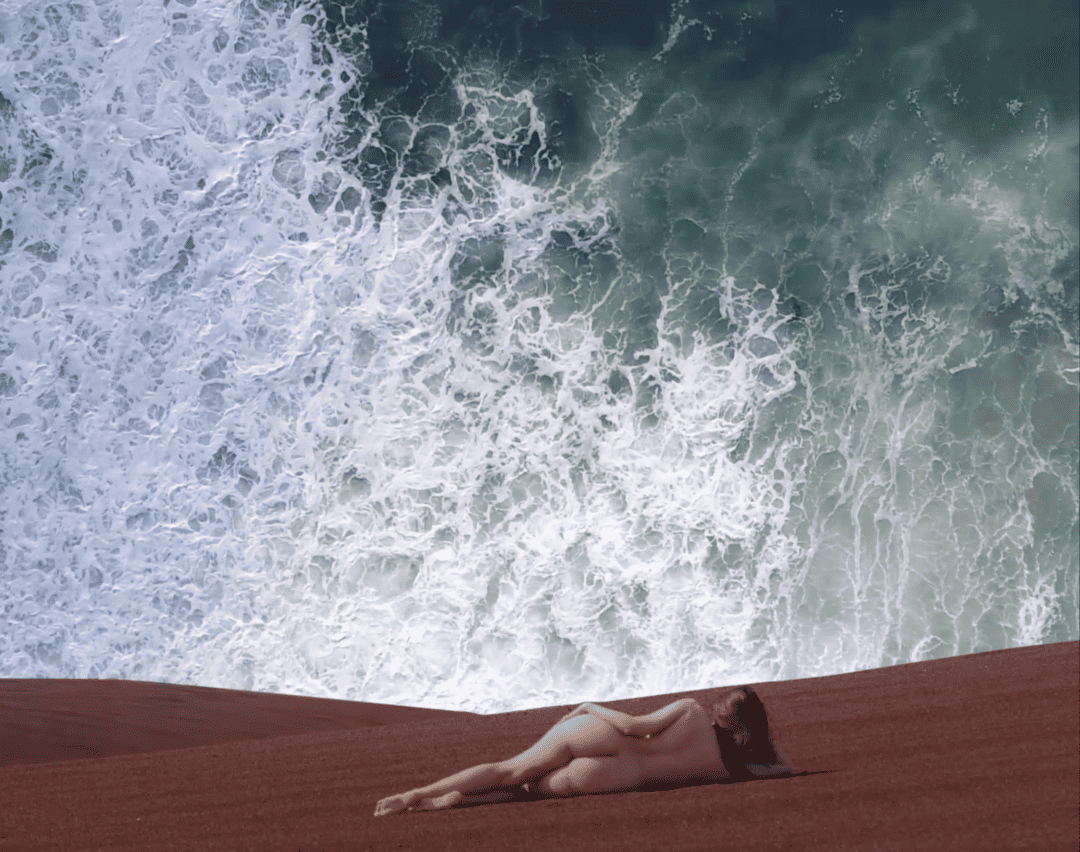
‘M.C.M.X.C.I (1991)’ by Ayla El-Moussa
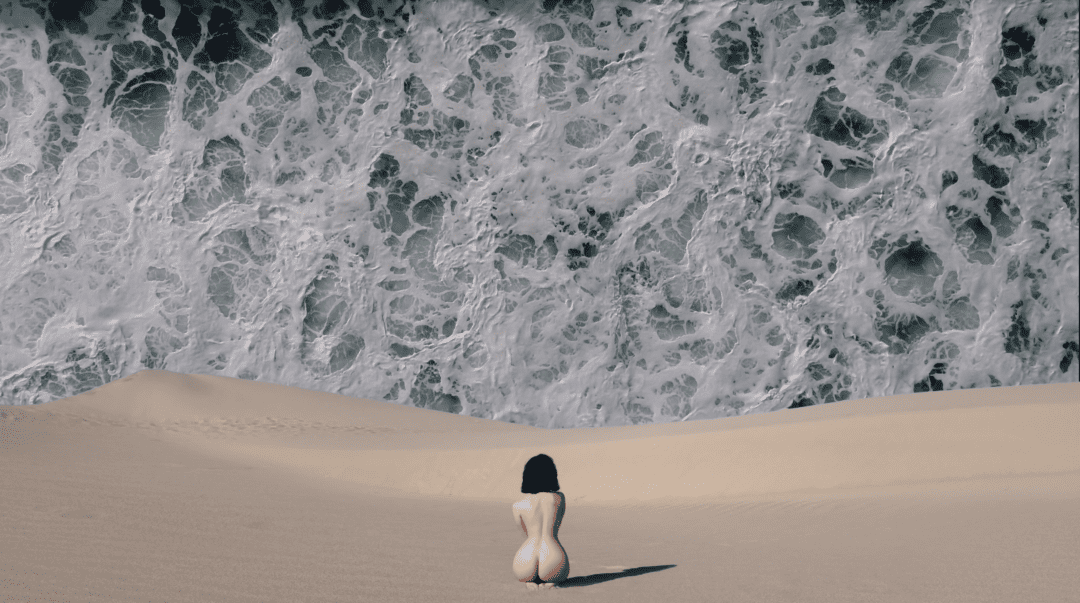
by Ayla El-Moussa
Prior to NFTs, how did your work exist in the world? Were your finished pieces live as videos on your site? Photographs? The flat screens?
My moving work was something I kept special and close to my heart. Besides the squares of Instagram and my website, they never really lived anywhere else. I did collaborate with art.com / KLIO art frames in 2016 which was a digital framed screen, but it didn’t live very long, so I continued to just post my works on Instagram.
Have you made prints available of your work? Do you feel making it a print on paper would diminish your vision?
I’ve always considered printing my work, I have created and flirted with interesting concepts where I would print my work and create string geometry on top of it but truly my work was created for a digital medium. I think if it is a special occasion or a special request, I am open to it but for now I am keeping it digital.
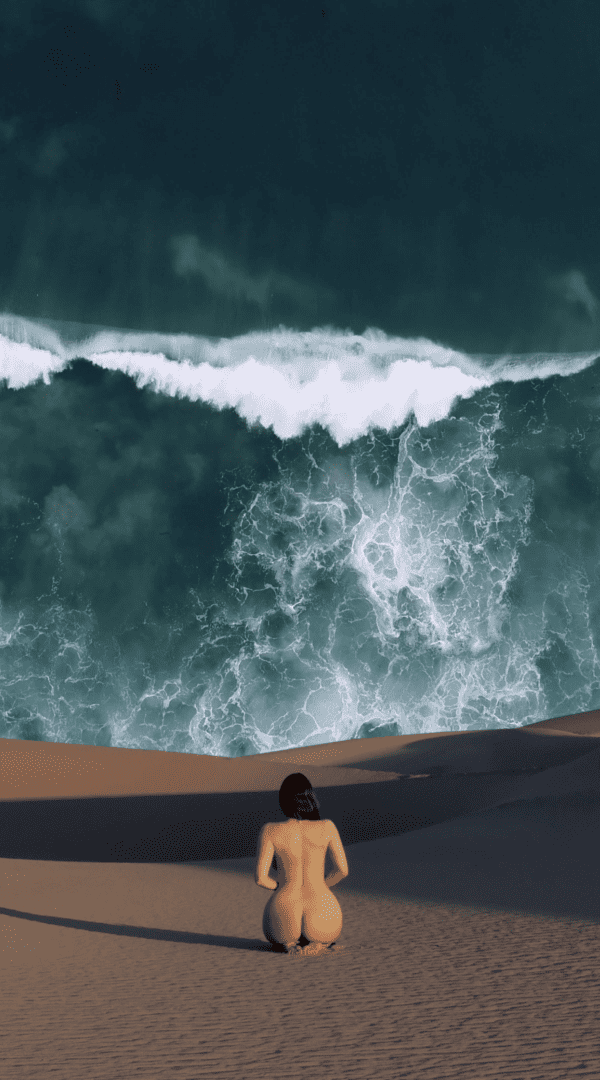
‘Infinite ∞ Hourglass’ by Ayla El-Moussa
An NFT is viewed as a digital image at rather small size and has a set of limitations that a printed photograph or a piece of hung art does not have. Given the limitations of NFTs, did you have to adjust your approach to craft to fit the new medium?
Somewhat yes, I was used to the compression of Instagram, but it is a little frustrating to have to continue to compress the work. But I haven’t adjusted my approach.

‘Stepping Out of the Shadows’ by Ayla El-Moussa
You’ve mentioned that you shoot all the elements that go into an NFT – the ocean, the desert, and yourself. That’s an immense amount of work. I imagine you’re hauling around quite a bit of equipment to use as well as what you need to prepare your role as the model as well. How are you shooting the ocean footage, drone?
It’s not too much, I use natural light and I create in different stages. When I go to shoot myself, it’s just me, a tripod, and my camera. It’s a plus that I shoot myself nude, so I don’t need to be hauling around outfits, haha! For the ocean, yes, drone footage, so only one thing to carry.
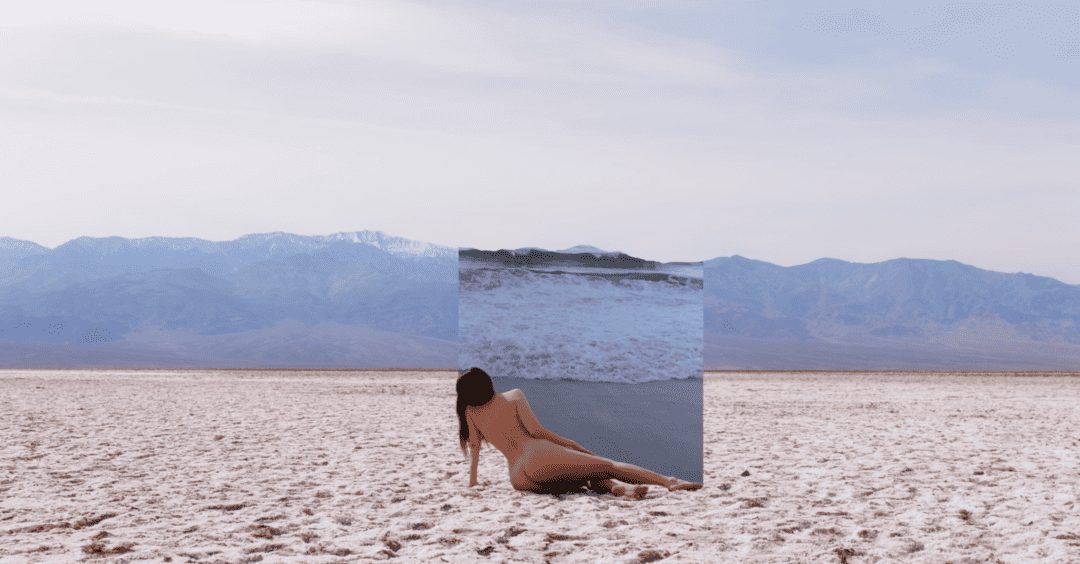
‘A Beautiful Illusion’ by Ayla El-Moussa

‘Reflection of Self’ by Ayla El-Moussa
Your shooting and editing process is far more private than I imagined. Just you alone out in the desert or at the beach. Sounds like a great form of meditation, which transfers onto your pieces. Have you considered using other models, men or women, or would that change the nature of your work?
I really started this process when it was hard for me to find models, and then it just became a really amazing process for myself — I always wanted to have a model who would come with me wherever I would travel, and then I just kind of became that myself.
Another big reason is I really don’t want to have to deal with release forms and legalities and paperwork, so to me the work becomes so much more personal and mine, if you will. I do use models sometimes for certain projects but right now I truly just love the process of being able to do and create everything myself.
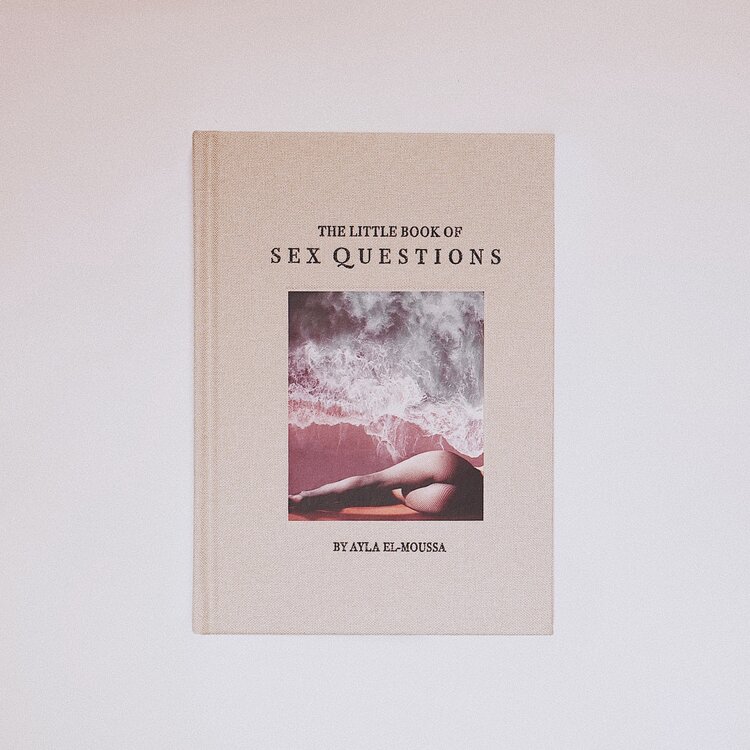
‘The Little Book of Sex Questions’ by Ayla El-Moussa
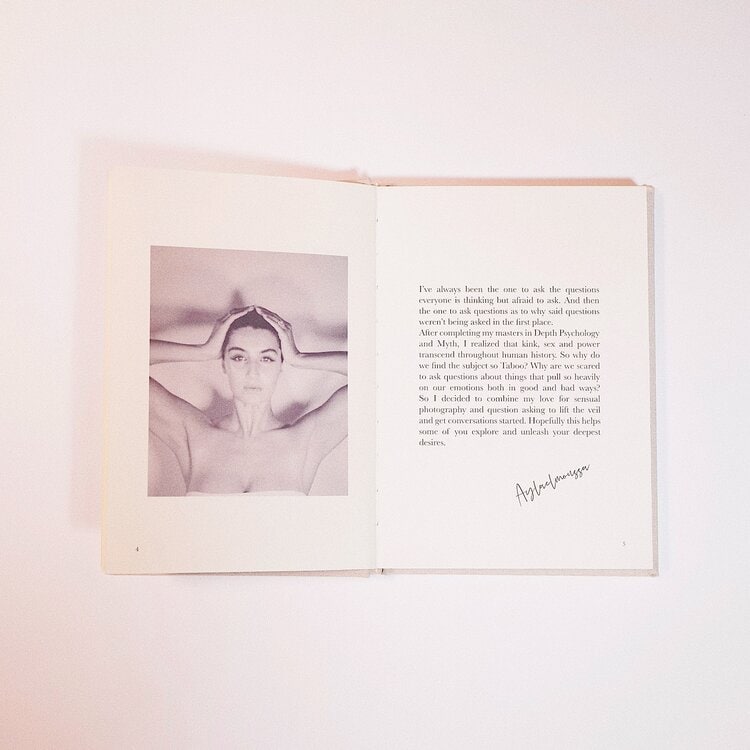
‘The Little Book of Sex Questions’ by Ayla El-Moussa

‘The Little Book of Sex Questions’ by Ayla El-Moussa
You have collaborated with others before too. Your book, The Little Book of Sex Questions is exactly what’s titled, a wonderful collection of sex questions that are ideal to read with a partner and see what interesting conversations come up. For this project you had a team of photographers and models to create the art for the book. What inspired you to bring in other artists?
The images were ones I had either previously taken of myself, models I had photographed, and both my siblings are very talented photographers, and I thought it would be amazing to incorporate some of their work into the book. It was more of a compilation of photos I had that weren’t really used for much and this gave them a purpose.

‘Force of Nature’ by Ayla El-Moussa
Force of Nature places the waves of the Pacific Ocean crashing within you – there’s a wonderful moment when a seagull moves across your chest. How much footage are you shooting to capture moments like this?
It all depends, I’ve caught moments where pelicans are flying or dolphins are just off to the side. It’s more luck really, and sometimes I can’t even tell on the screen because it’s so small. I usually discover these beautiful incidents after and when I’m creating my pieces, I find the video that works for that piece. For Force of Nature, I was debating between two videos but the fact that the bird was flying, and it just fit so beautifully with the piece I knew it was the one.

‘Ride the Wave’ by Playboy x Ayla El-Moussa
Your piece Ride The Wave was part of Playboy’s Miami Beach Art Collection. How did you connect with Playboy? Was there much back and forth with them on your concept for the final NFT, or were you left alone to do what you wanted?
So, funny story – about three years ago I posted on my Instagram that I wanted to shoot for Playboy, because it had been a lifelong dream. What was really cool was slimesunday was curating a list of up-and-coming NFT artists and I was on that list. They reached out to me, and basically gave me an outline. It was a beautiful collaboration; the team was so epic to work with. They let me create my vision and had some minor edits, but it was really straight forward and fun.
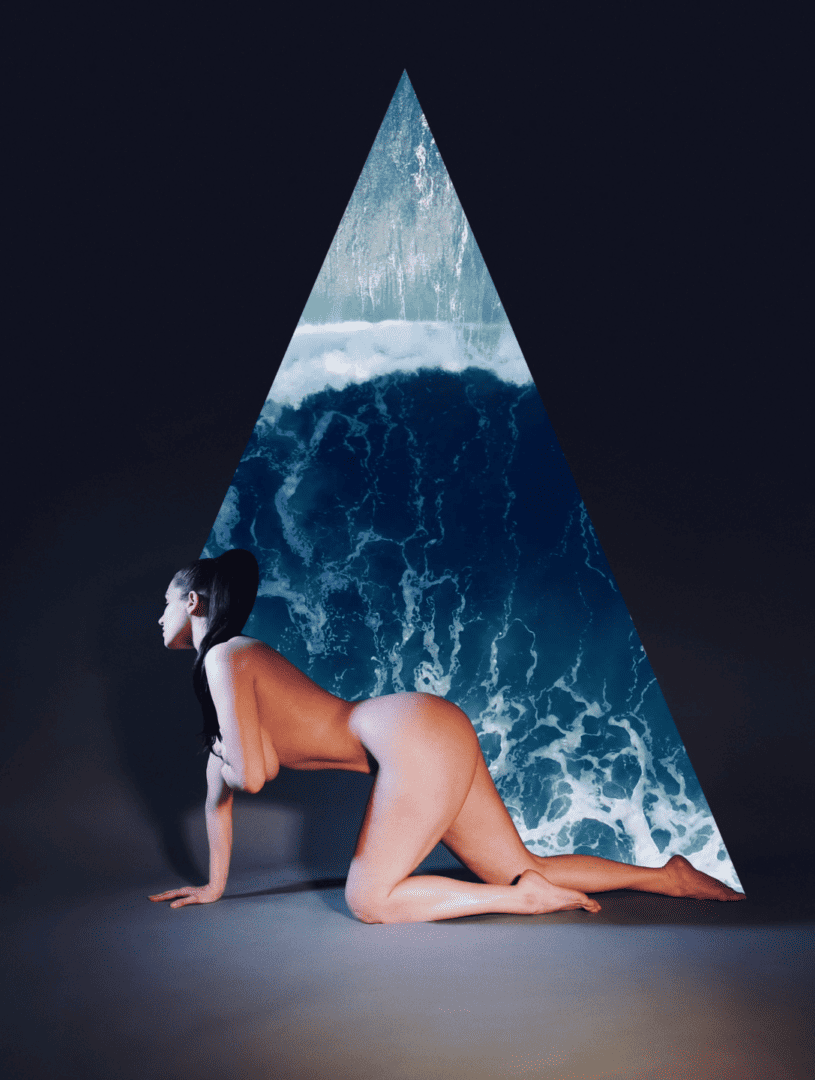
‘Sacred Geometry’ by Ayla El-Moussa
One thing I love about your work is you, as at the model, have your back to camera for each piece. It is not you, ‘Ayla,’ the audience sees, but themselves. Was that a conscious effort to not show your face? Is your face something you plan on keeping hidden throughout your work?
For my first year I decided I really wanted to keep it hidden. I wanted it to be more about ‘human’ and the female within the work and exactly your point — the audience could see themselves and imagine themselves in place of me, as opposed to seeing AYLA’s FACE and that becoming the story.
I do have plans to reveal my face slowly throughout 2022 which is something I’m excited about since I have established my ‘body’ of work in 2021.



